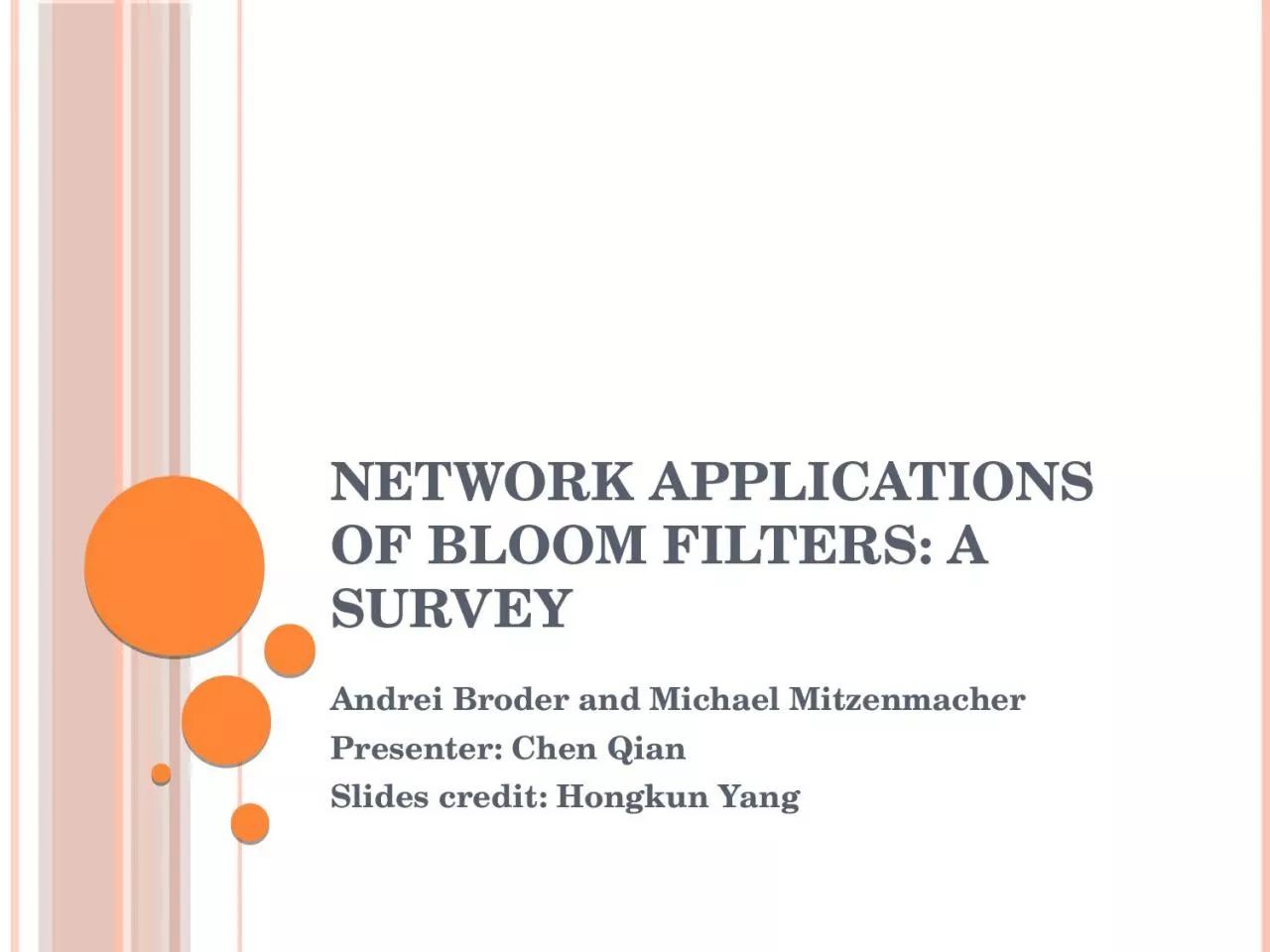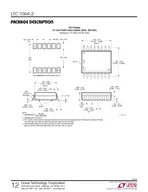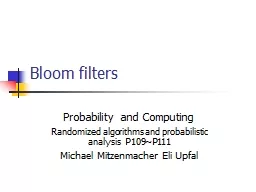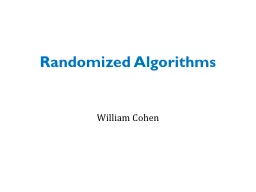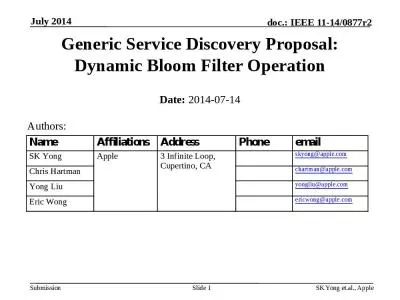PPT-Network Applications of Bloom Filters: A Survey
Author : DiamondsAreForever | Published Date : 2022-08-02
Andrei Broder and Michael Mitzenmacher Presenter Chen Qian Slides credit Hongkun Yang Outline Bloom Filter Overview Standard Bloom Filters Counting Bloom Filters
Presentation Embed Code
Download Presentation
Download Presentation The PPT/PDF document "Network Applications of Bloom Filters: A..." is the property of its rightful owner. Permission is granted to download and print the materials on this website for personal, non-commercial use only, and to display it on your personal computer provided you do not modify the materials and that you retain all copyright notices contained in the materials. By downloading content from our website, you accept the terms of this agreement.
Network Applications of Bloom Filters: A Survey: Transcript
Download Rules Of Document
"Network Applications of Bloom Filters: A Survey"The content belongs to its owner. You may download and print it for personal use, without modification, and keep all copyright notices. By downloading, you agree to these terms.
Related Documents

